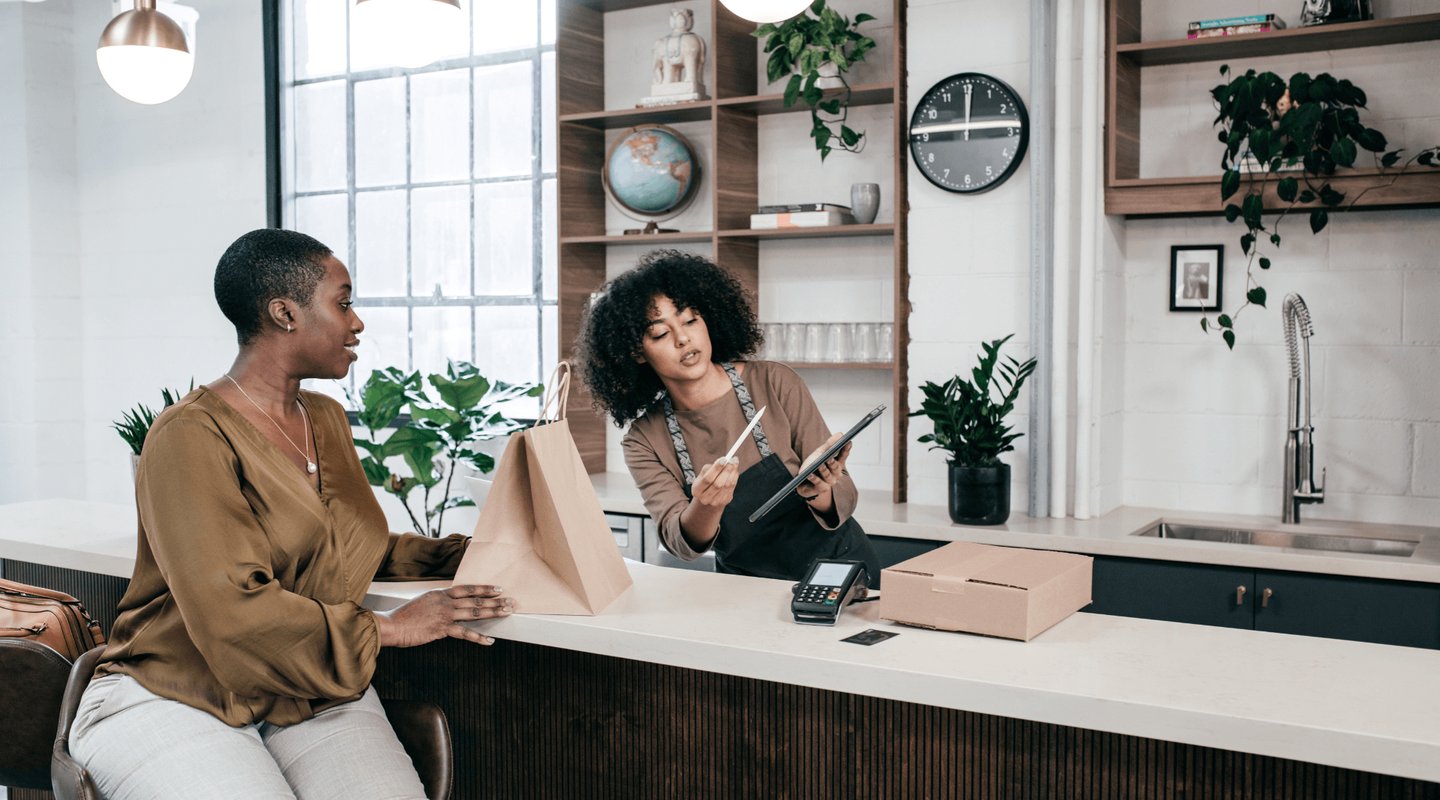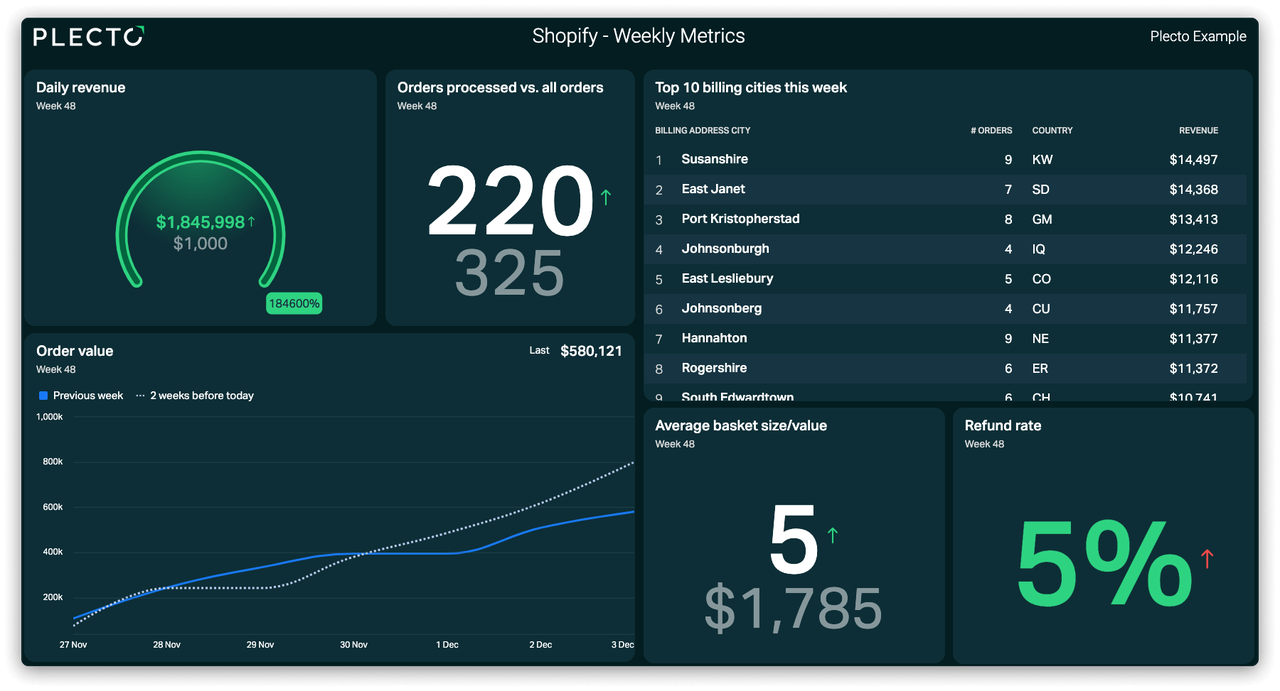Retailers continue to face fierce competition as cash-strapped customers watch their budgets more carefully than in recent years. Whether you’re a brick-and-mortar retailer or mostly sell online, you’re probably wondering how you can be more competitive. While many companies try to compete on price, there’s an intermediary approach that could help you avoid razor-thin margins. It’s customer service.
Deciding to compete based on customer service can build loyalty, increase repeat purchases, and reduce marketing costs. According to Salesforce research, 75 percent of customers say that excellent customer service would secure their loyalty – even after the company made a mistake. The same research found that good customer service would make 88 percent of customers more likely to purchase again – and 75 percent say they’ve recommended a company after receiving excellent customer service.
Read on to discover ten actionable tactics you can use to improve retail customer service.
10 Tactics for Improving Retail Customer Service
When it comes to improving customer service, two critical areas make the most impact. First, attention to the details of the customer experience. Second, the degree to which the company empowers employees to take action.
Here are ten tactics you can implement now to improve customer service in retail, and claim your market share!
1. Invest in onboarding
Employees who have a positive and thorough onboarding process feel a stronger emotional connection to their company and can start making worthwhile contributions much sooner than those who don’t. To help new employees do their best job, take the time to explain what “excellent customer service” looks like for your company, how to provide it, and how it’s measured. Putting an ill-prepared employee on the retail floor or the phones is setting them up for failure, not to mention putting your company’s reputation at risk.
2. Understand your customers’ needs and expectations
Especially in the age of social media, customers’ needs and expectations are moving targets. Many companies fail to evolve, providing reactive customer service based on an outdated model that’s misaligned with what their customers need and expect right now.
Ask your customers what they think of your products and customer service, or keep tabs on what they’re saying on social media and online review sites. A short survey offering a discount on a future purchase or the chance to win a prize is an excellent cost-effective way to collect insights straight from the source.
3. Create shared KPIs
After you’ve identified what your customers want and expect, make your mission official by establishing shared KPIs to keep everyone focused on delivering exactly that. Formalizing your goals ensures that everyone knows what’s expected. Online or single-location retailers can create team KPIs, while those with multiple locations might prefer to set KPIs for each location. However, you choose to do it, making sure that everyone is working toward the same goals will no doubt lead to improved service.
4. Embrace technology
Today’s retailers have access to more digital tools than ever. Choosing the right systems and tools can improve service efficiency and quality by streamlining transactions, tightening up inventory management, improving personalization, and more! Acceptance of chatbots and self-service tools is growing, and these tools can help provide the instant, around-the-clock service that customers expect.
5. Provide personalized experiences
Today’s customers expect personalized experiences, and technology has made offering highly personalized experiences easier and more cost-effective than ever before. Generative AI, in particular, is ushering in a new era of hyper-personalization. Whether it’s special offers, informational emails, support, or the products and services themselves; customers are looking for experiences tailored to their preferences and needs.
Recognizing occasions like birthdays and anniversaries is an easy-to-implement first step toward better personalization. To further boost your company’s personalization efforts, mine the date you’ve collected for insights to help you contact customers on their preferred channels, make relevant product recommendations, and tailor rewards and special offers to individual preferences.
Build your first dashboard.
Start your 14-day free trial today
6. Offer in-store amenities
As online shopping continues to gain momentum, brick-and-mortar retailers and extensions of online retailers have to sweeten the deal if they’re going to keep bringing customers through their doors. Offering simple market-appropriate amenities like comfortable seating areas, restrooms, reading material, play areas, and refreshments can help bring people into the store, make them stay longer, and hopefully spend more money. This isn’t just about catering to your core demographic, think about who might be accompanying them into the store and find ways to keep them occupied.
7. Create a website that adds value
Whether you sell strictly online or also have physical locations, it’s essential to create a website that adds value to the customer experience. Customers who shop in person often pre-shop online to identify the items they might want to buy, and many look for store-related information like locations and opening hours. Make sure to always provide comprehensive product details (e.g., materials, sizing information, measurements) up-to-date store details, contact information, and even better – real-time inventory information.
To take your online presence to the next level, engage with your customers on various social media platforms. Retailers with multiple brick-and-mortar locations might look into maintaining SoMe pages for individual locations, which can be an excellent way to promote special offers and events, and keep customers up to date on changes in opening hours, etc.

8. Meet customers where they are
The lines between online and offline shopping as well as retailers’ digital platforms are becoming increasingly blurred. Customers in 2024 want to be able to order something online and return it to a physical location. They also want to be able to communicate with customer service on the channel that’s most convenient to them whenever they need support. The majority of customers regularly use at least three channels to engage with a single company, and they expect consistent service whether it’s via phone, email, live chat, social media, or in person.
To meet this demand, companies are turning to omnichannel support, which tracks all customer interactions in one place – regardless of channel. There are systems to help with this by syncing data between multiple systems into a “collaboration hub,” providing customer service teams with a real-time overview of each customer’s interactions with the company.
9. Empower employees to make decisions
There are few things more frustrating for a customer than dealing with an employee who says, “I’m sorry, there’s nothing I can do.” This scenario leads to dissatisfied customers and unhappy employees, and it’s easily avoided. Empowering front-line employees to make service-related decisions is an easy and immediate way to improve retail customer service.
10. Reward customer loyalty
Once you’ve implemented some of these tactics, you should have secured your customers’ loyalty. Now it’s time to recognize and reward that loyalty. Research published by Bain & Company found that increasing customer retention by 5 percent increased profit by more than 25 percent because loyal customers spend more than new customers. A good loyalty program encourages customers to continue their current buying habits by incentivizing them with perks in exchange for their continued business. Combined with point-of-sale software, it’s also another opportunity to provide a personalized experience – online or in person.
Looking for a new way to achieve retail success?
Plecto supports tons of retail teams around the world in achieving retail success through real-time KPI visualization. Want to learn more? Check out Shaping New Tomorrow's case.




